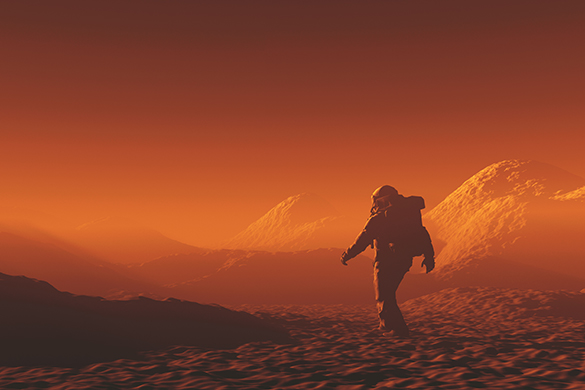Protecting astronauts' brains as they travel to Mars

NASA is preparing to land humans on Mars by 2039. Unlike previous space missions, the Mars mission is expected to last 18 months or more. Astronauts on their way to Mars will be impacted by three inescapable and potentially detrimental environmental stressors:
- Microgravity
- Space radiation (SR)
- Social isolation
All of these stressors can harm astronaut health and performance. Understanding these stressors can help scientists find ways to buffer their impact on the crew and increase the chances for a successful mission.
Crew members will have to be self-sufficient in many regards, and, due to the long lag time for communication, astronauts will have to act more autonomously than on previous missions. Mission success will depend on astronauts reacting quickly and creatively to solve unexpected problems and then implementing those solutions, such as repairing or replacing broken components.
CINID researchers are at the forefront of establishing the impact that space radiation has on higher-level thinking processes required to complete the mission. Recent research finds that broken, or fragmented, sleep -- a common problem for astronauts -- can harm complex thinking even more after exposure to space radiation.
Ongoing CINID studies are finding the ways microgravity, social isolation and space radiation can affect behavior, sleep, and inflammation and the transmission of information in the nervous system.